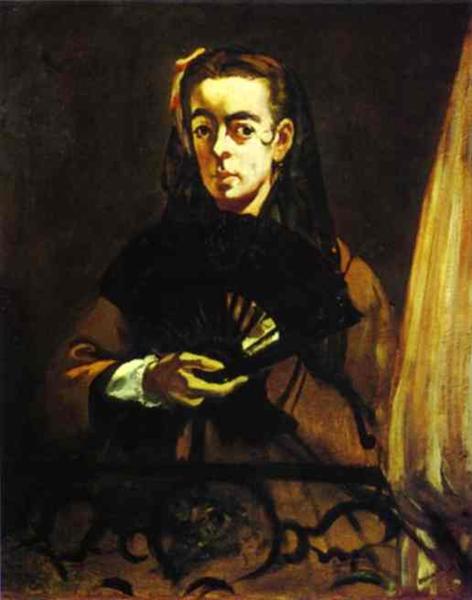Descriere
A central figure in the development of modern art, Édouard Manet has spent much of his career challenging the conventions of academic art of his time. His 1865 work Angelina encapsulates the essence of his aesthetic exploration, which is characterized by a bold approach to subject matter, color, and representation. In this painting, Manet presents a standing female figure in a domestic setting, providing an intimate snapshot of everyday life in 19th-century France. Through careful spatial arrangement and a color palette that plays with light and shadow, Manet establishes a palpable sense of presence and reality.
The composition of Angelina is remarkable for its simplicity and effectiveness. Angelina's figure stands in the foreground, commanding the viewer's attention. Her position is contrasted by the seemingly blurred background, reinforcing the almost ethereal quality of the female figure. Manet employs a mix of techniques that allude to loose brushwork and naturalistic depiction. The way the light falls on Angelina's skin, achieving an almost radiant effect, reflects the artist's mastery in using lighting to complete the work's visual narrative.
Colour plays a pivotal role in Angelina. Manet opts for a soft range of tones that emphasise the melancholic character of the figure. Angelina's dress, featuring a subtle colour scheme, blends harmoniously with the darker background, creating an effect of flow and continuity. This focus on colour not only enhances the aesthetic appeal, but also invites the viewer to contemplate the emotional background of the figure, suggesting a mix of vulnerability and strength.
Although Angelina is not a work loaded with complex symbolism, its everyday nature offers a space for reflection on the role of women in society and the family context. By capturing a moment of stillness in Angelina's life, Manet invites the viewer to observe the beauty of the mundane, a distinctive feature of his style that is also seen in his other works, such as Olympia and Luncheon on the Grass. In each, Manet explores themes of the female figure in different contexts, using characterization that goes beyond mere visual representation to reach a deeper emotional connection.
"Angelina" can also be seen as a representation of the evolution of art in the 19th century, where works began to move away from strict academic rules towards a more innovative and personal horizon. Manet, known for his rejection of tradition, lays the foundations for future movements in this work, opening paths that would influence impressionism and modern art.
The work, while sometimes overshadowed by Manet's better-known creations, remains a testament to his talent and ability to innovate within painting. "Angelina" is an invitation to explore not only the master's technique and aesthetics, but also to immerse oneself in the lives of the figures he portrayed, contributing to the broader narrative of the human experience in art.
KUADROS ©, a famous painting on your wall.
Hand-made oil painting reproductions, with the quality of professional artists and the distinctive seal of KUADROS ©.
Painting reproduction service with satisfaction guarantee. If you are not completely satisfied with the replica of your painting, we will refund 100% of your money.

